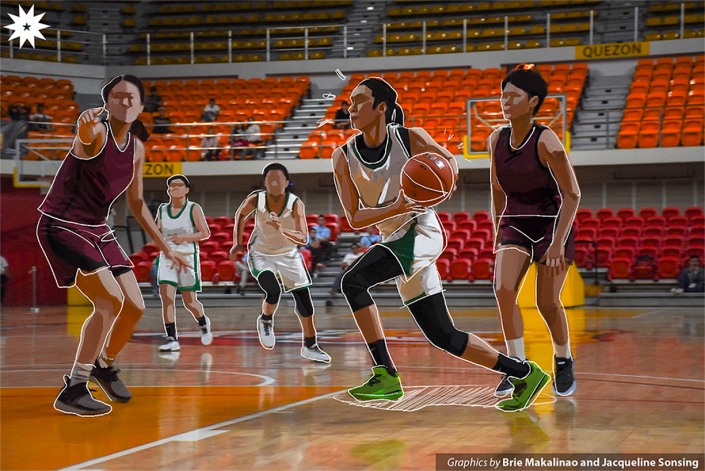Basketball is said to be one of the most popular sports in the Philippines. It may arguably even be the most popular, what with familiar scenes of people playing the game dotting the streets and local community courts.
Tracing its roots to Massachusetts, United States in 1891, Basketball normally features two teams of five that aim to outscore one another until the end of four quarters with 10 minutes each. The sport then made its way to the Olympic stage during the 1936 edition, while the inaugural tournament of the International Basketball Federation (FIBA) was held in 1950. Through the years, several rules were added to regulate player movement on the court, such as the 24-second shot clock, goaltending, and losing possession for touching the ball before it goes out of bounds, among
other.

Come the late 1980s, a new rendition of the sport was created as 3×3 basketball was introduced in the United States. The sport has grown steadily worldwide since then and was further amplified when FIBA first trialed 3×3 basketball during the 2007 Asian Indoor Games in Macau. Several years’ worth of demonstrations and test runs have proven successful: 3×3 basketball will be officially included as a medal sport in the 2020 Tokyo Olympics.
The surging popularity of 3×3 basketball both globally and in the Philippines has given rise to the UAAP embracing it as a demonstration sport in 2017. It was then launched as an official addition this Season 82, with the 3×3 tournament now being counted as part of the medal tally for the UAAP overall championship.
Major transition
Although the differences may seem negligible at first glance, there are a lot of modifications for the 3×3 iteration. Only 10 minutes of playing time is allowed for 3×3, which is only a quarter compared to the 5×5 version, and the game is played within the half court utilizing only one basket, instead of two on opposing sides.
Shooting from inside the arc will garner the team a point, and so would each converted free throw. Meanwhile, the team will earn two points if they shoot from beyond the arc, whereas such a play would have been worth three points in the 5×5 variant. Another major difference between the two formats is that possession of the ball remains with the team who gains a point in 3×3, while possession switches to the other team who fails to score in the 5×5 variation.
With the offense-driven and fast-paced plays of 3×3 basketball, every
player of the team has to exhibit the versatility and athleticism needed in
order to dominate the game. Drawing from her considerable experience in the
court, DLSU Lady Archers team captain Bennette Revillosa shares, “Players in
3×3 basketball [should be] all-around players. This means that players [have to
be] capable of shooting, dribbling, and defending.” She contrasts this to the
5×5 version where each player has greater leeway to shore up each other’s
weaknesses and “cover for teammates who are weak in shooting
or defending.”
Revillosa was previously selected to represent the Green-and-White in Season 81 during the second and final year of the 3×3 format being a demonstration sport. She was joined by fellow Lady Archers Joehanna Arciga, Bettina Binaohan, and Ameng Torres Torres, all of them hailing from the women’s 5×5 basketball squad of La Salle—similar to how most UAAP beach volleyball representatives would also be members of the schools’ main volleyball teams. However, they were unable to clinch a Final Four slot after finishing with a 2-5 win-loss record.
Revillosa says that playing 3×3 instead of 5×5 was a huge adjustment for her. “There are no breaks which means that every possession is important. Once the opponent takes the lead, it will be hard to recover given the limited time allotted,” she explains.
Moving a step ahead
Considering the smaller space and the fewer number of participants, 3×3
events are looking to be a good fit in the Philippines because the sport can be
played within smaller districts and in both indoor and outdoor courts. A
tournament can be held in as small as a village or barangay court with
four teams
playing simultaneously.
Given the dominance of basketball as a beloved sport for Filipinos, a heightened level of play for 3×3 basketball is highly possible in the country, provided the sport and its players are given enough exposure and the appropriate resources. Revillosa ruminates on how the sport can be developed further in the Philippines, “[We should] provide more 3×3 tournaments not only in collegiate leagues but also local tournaments, like those inter-barangay leagues.”
Whether basketball is played by a team of five or three, its popularity remains largely unrivaled across the country as a worthwhile sport to experience. It is difficult to imagine a stereotypical barangay without at least one basketball court filled with passionate individuals playing either alternative, or even other modified versions, of the same lovable game of hoops.
